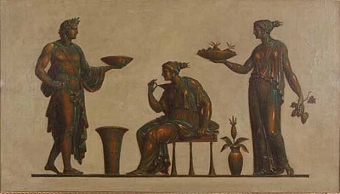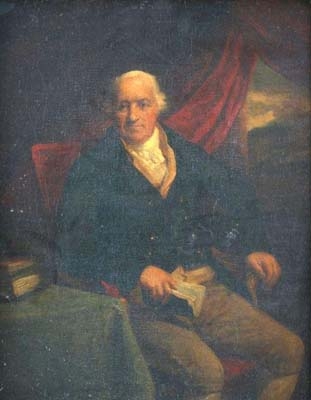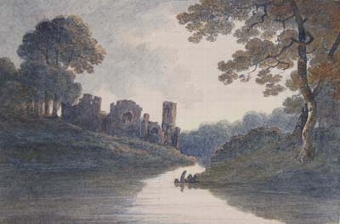interior of st nicholas church whitchurch, bristol
- View other items in:
- antiques interior design modern and vintage
- other interior design
artware ltd
Enquire about this antique
Artware Ltd has 565 antiques for sale.
click here to see them all
There has been a place of worship on the site of St Nicholas for over a 1,000 years, believed originally to have been an old saxon cell or chapel of the saint, St Whyte. The church was built here In the Norman time and was known as St Gregorys and only became St Nicholas after the reformation. When it was built, the church was an enlargement of an aisleless cruciform plan, with the tower between the nave and the sanctus above the chancel and appeared to have been completed in the year 1200AD.
The centre light the ''crucifixion.''
The right hand light ''Christ?s commission to his disciples to feed his sheep.''
Henry Cole, gave the pulpit to the church during its refurbishment in 1861. It cost a considerable amount of money and came at great personal sacrifice to Henry, who in the process of raising the funds partly starved himself. His health was weakened by this and he unfortunately died from a severe cold and hence the installation of the window in his memory made by his many friends.
The font is Norman as is the beautifully carved old oak screen which divides the Smyth chapel from the south aisle.
That just leaves the tower, which now only contains one bell, the others having been sold to the church in Queen Charlton. The remaining bell is thought to be very valuable and was recast by Bilbie, the well known bell founder of Chew Stoke.
Antiques.co.uk Ref: F3PD8349
- Materials:
- Pencil and Watercolour
Artware Ltd
Artware Fine Art specialises in fine antique, decorative and historical portraits and topographical pictures . We cover a period from the 17th and 18th centuries through to the 19th & 20th Centuries. We have over 150 portraits in stock, which can be viewed on our web site, each historical portrait has well researched biographical information both on the sitter and the artist.
Contact details
18 La gare
51 Surrey row
London
Greater London
SE1 0BZ
UNITED KINGDOM
T: 0207 921 97904
E: greg@artwarefineart.com
W: www.artwarefineart.com














